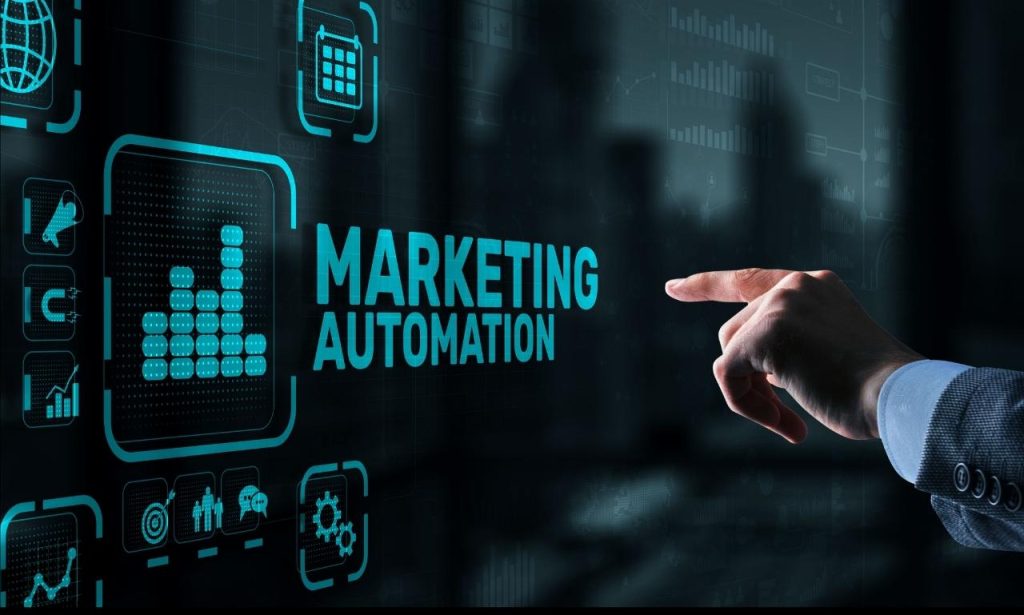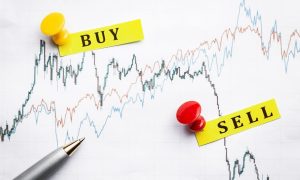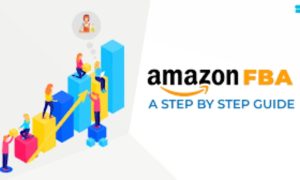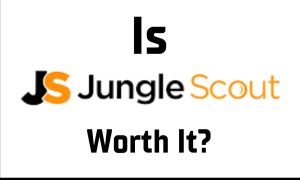Selling on Amazon has become one of the most popular online business ideas for entrepreneurs seeking financial independence. With minimal overhead and the potential for huge profits, it’s no wonder many have ventured into Amazon’s FBA (Fulfillment by Amazon) program. Today, I’ll share my story of how I reached $1 million in revenue on Amazon with zero employees. This journey hasn’t been without its ups and downs, but it’s one that I hope can inspire others looking to break into the e-commerce space.
Getting Started: From Football Tickets to Watches

My story starts back in 2009 when I was just a fresh graduate from the University of Florida. I had no concrete career plans but a strong passion for entrepreneurship. My first hustle was buying and selling football tickets, which surprisingly taught me valuable lessons in rejection therapy and persistence—both crucial for entrepreneurs. Rejection therapy is, in essence, learning to handle refusal and failure, which every business owner will face.
After college, I ventured into online platforms like TicketMaster and Stubhub, flipping tickets for profit. The repetitive nature of this work eventually wore on me, and I started yearning for a business that could add more value to people’s lives.
Transition to Physical Products: Watches
My path took a sharp turn when I decided to visit a friend in China. It was during this trip that I stumbled upon the idea of selling watches. I bought a few watches, brought them back home as souvenirs, and was surprised by how much attention they garnered. The feedback encouraged me to start sourcing watches and selling them online.
I partnered with a friend who was willing to invest $4,000, and I sourced 800 watches for just $3 each. I also invested a hefty sum in building my first website, but that was a mistake. Lesson learned: don’t spend over $300 on your first website. Eventually, I built a much simpler and more effective site using Shopify.
I priced my watches at $65, a strategy based on Lesson 2: Price High. Setting a higher price point not only positioned my watches as a premium product but also allowed for better profit margins and fewer returns. The journey wasn’t always smooth, though. My partnership with Groupon introduced my brand, TIKKR, to thousands of new customers, but the inability to fulfill all orders nearly destroyed the business. I learned the importance of having a reliable supply chain early on.
Pivoting to Bamboo Sunglasses: The Birth of Woodies
When the watch market became saturated, I pivoted to bamboo sunglasses. I called the new brand Woodies, inspired by the iconic wood-paneled station wagons of the 1960s. This time, I was determined to make the brand stand out with unique marketing and a strong focus on customer experience.
My journey with Woodies included ups and downs, including a deal with Groupon that didn’t meet my expectations. We produced 10,000 units, but only sold 4,000. Lesson learned: stay optimistic, but be realistic with forecasts. Despite the setbacks, we ended up with a $140,000 capital base and decided to try something different—a Kickstarter campaign.
A Risky Gamble with Kendall Jenner

To create buzz around the Kickstarter campaign, I decided to hire Kendall Jenner for a photoshoot. It cost a hefty $25,000, but the exposure was priceless. While the campaign only raised $30,000—far short of our expectations—the brand recognition that came from Kendall’s involvement was a game changer. One tweet from her led to an instant boost of 20,000 email subscribers.
Lesson 3: Always stay in the game and hope for your big break. Entrepreneurship is about taking calculated risks, and while the Kendall campaign wasn’t an immediate financial success, it built the credibility of the Woodies brand in ways that would pay off in the long run.
Scaling Up: Leveraging Amazon FBA
After our moderate success with Kickstarter, I turned my focus to Amazon FBA. Amazon FBA became my primary sales platform, accounting for over 60% of my total revenue. Using Amazon FBA allowed me to focus on growing the business while Amazon handled the logistics. It enabled me to live a nomadic lifestyle, traveling while my business continued to run.
Selling on Amazon came with its own set of lessons:
- Start small and test the market before making big investments. My first sunglasses batch was modest, and I used data from early sales to decide how to scale.
- Data management and accounting are essential to tracking success. I used Shopify and Xero for accounting to stay organized.
Amazon’s platform made it possible for me to handle everything alone, from marketing to customer service. With the help of tools like Jungle Scout for product research and Seller Central to manage listings, I could efficiently run an entire e-commerce operation by myself.
Choosing the Right Products: Private Label Products
One of the key aspects of success on Amazon is picking the right products. I focused on private label products, where I could build my brand around items that had potential but lacked a strong identity. Jungle Scout was crucial in finding an ideal product with enough demand but without overwhelming competition.
I chose sunglasses because they had good profit margins, manageable shipping and storage costs, and a high perceived value. I sourced these products from China using Alibaba and established strong relationships with suppliers. Good relationships led to better pricing, faster production times, and better quality control.
The Importance of Reviews and Credibility
To achieve $1 million in revenue on Amazon with zero employees, I had to make sure every aspect of my listing was optimized. This meant focusing on:
- Product Reviews: Encouraging customers to leave product reviews was crucial for building credibility. I used Feedback Genius to automate review requests.
- Product Descriptions: Detailed and informative product descriptions helped convert more visitors into buyers. I included all relevant Product Information and addressed common customer questions directly on the product page.
- Product Photos: High-quality photos are vital. I invested in professional images that highlighted the features and lifestyle appeal of Woodies sunglasses.
Marketing Tactics: Amazon PPC and Social Media
Running effective marketing campaigns was also a major driver of sales. I used Amazon PPC (Pay-Per-Click) to gain visibility and rank higher in search results. PPC is a must for anyone trying to scale their Amazon business, especially in a competitive product category like fashion accessories.
Outside of Amazon, I leveraged Instagram and Snapchat to grow the brand’s visibility. Working with micro-influencers also helped generate authentic user-generated content, which I reposted to build a sense of community around the brand.
The Importance of Automation and Tools

Running an Amazon business without employees requires efficient systems and automation. Here are some of the tools that played a crucial role in helping me reach $1 million in revenue:
- Shopify: I still use Shopify for my direct-to-consumer website. It integrates seamlessly with Amazon, making inventory and order management easier.
- Compass.Co: This e-commerce analytics tool gave me insight into my sales metrics, helping me make informed decisions about pricing and marketing.
- Zapier: Automation with Zapier saved me countless hours. I used it to connect various apps and automate workflows, like adding new email subscribers to Mailchimp.
- HelloProfit: This helped me analyze my Amazon sales data to better understand my monthly profit and lifetime profits.
Challenges and Lessons Learned
Reaching $1 million in revenue wasn’t without its challenges. There were setbacks and lessons learned along the way:
- Shipping Costs and Storage Costs: International shipping and storage can eat into profits quickly. I learned to limit international shipments and focus on domestic customers to reduce shipping costs.
- Customer Experience and Service: Good customer service is critical to success on Amazon. I initially struggled with managing returns and complaints, but with time, I streamlined my customer support processes to enhance the customer experience.
- Handling Returns and Warranties: Managing returns, especially for fashion items like sunglasses, was a challenge. I learned to anticipate common issues and address them proactively to reduce the number of returns.
- Pricing Strategy: Setting the right price was key to maintaining good profit margins. I aimed for a price point that covered all costs—including marketing, shipping, and Amazon fees—while still leaving room for a healthy profit.
Expanding Revenue Streams: Amazon Affiliate and Beyond
In addition to product sales, I explored other Amazon-related income streams, such as the Amazon Affiliate program. I included affiliate links on my website, earning a small commission whenever someone purchased a product through Amazon. This added up to a modest but consistent income each month.
I also considered options like Amazon Merch on Demand and Amazon Kindle Direct Publishing as potential avenues to diversify my revenue streams. For those just starting out, Amazon offers several programs that can complement a private label product business.
Building an Email List: Long-Term Customer Relationships
One of the most valuable assets I’ve built over the years is my email list. Growing an email list has allowed me to connect directly with my customers, build relationships, and drive repeat purchases. I used Mailchimp for email marketing, and growing my list was a major goal after every product launch or promotional event.
Kendall Jenner’s involvement helped me grow my email list by 20,000 subscribers, and I’ve continued to engage this audience by sharing exclusive discounts, new product launches, and brand updates. An email list is a powerful tool for anyone looking to build an online business, as it gives you direct access to people interested in your brand.
Moving Towards $1 Million in Revenue on Amazon with Zero Employees
Scaling to $1 million in annual sales is no small feat, especially without any employees. It requires dedication, hard work, and smart use of available resources. Here are some key takeaways that helped me achieve this milestone:
- Focus on Product Credibility: Building trust is crucial when selling online. Product reviews, high-quality photos, and a professional brand image go a long way in establishing credibility.
- Leverage Amazon Services: Programs like Amazon FBA and Amazon PPC provide incredible support for independent sellers. They take care of logistics, allowing you to focus on sourcing and selling.
- Keep Overheads Low: Without employees, I needed efficient systems in place to handle everything. Automation tools and outsourcing certain tasks allowed me to maintain a lean business model.
- Think Long-Term: Many people look for quick wins, but building a brand takes time. I treated my business as a long-term investment, reinvesting profits into improving product quality and expanding my reach.
Conclusion
My journey to $1 million in revenue on Amazon with zero employees has been filled with lessons, challenges, and victories. From selling football tickets in college to creating Woodies, an international bamboo sunglasses brand, I’ve learned that success in e-commerce isn’t just about finding the right product—it’s about persistence, smart decision-making, and continual learning.
Whether you’re just getting started or looking to scale your existing Amazon business, remember that every successful journey begins with a single step. Stay focused, be adaptable, and don’t be afraid to take calculated risks. With dedication and the right strategies, reaching $1 million in revenue is an achievable goal.
Also Read: Guide to Buying From Alibaba and Selling on Amazon
FAQs
Start by researching product opportunities using tools like Jungle Scout. Choose a product with good demand and manageable competition, source it from a supplier (e.g., Alibaba), and create a brand around it.
You need to account for shipping costs, storage costs, Amazon fees, product sourcing costs, and marketing costs (like Amazon PPC). It’s essential to price your products to cover all these expenses and ensure a good profit margin.
Absolutely! With the right tools and automation, you can manage everything from sourcing to sales. Tools like Seller Central, Zapier, and Shopify make it possible to run the business efficiently without employees.
You can either automate a lot of the customer service through Amazon or hire a virtual assistant. I initially relied on family members for help and later outsourced some tasks to manage customer inquiries and returns.
Jungle Scout for product research, Amazon Seller Central for managing listings, Feedback Genius for automating review requests, and Mailchimp for email marketing are some of the best tools for Amazon sellers.





